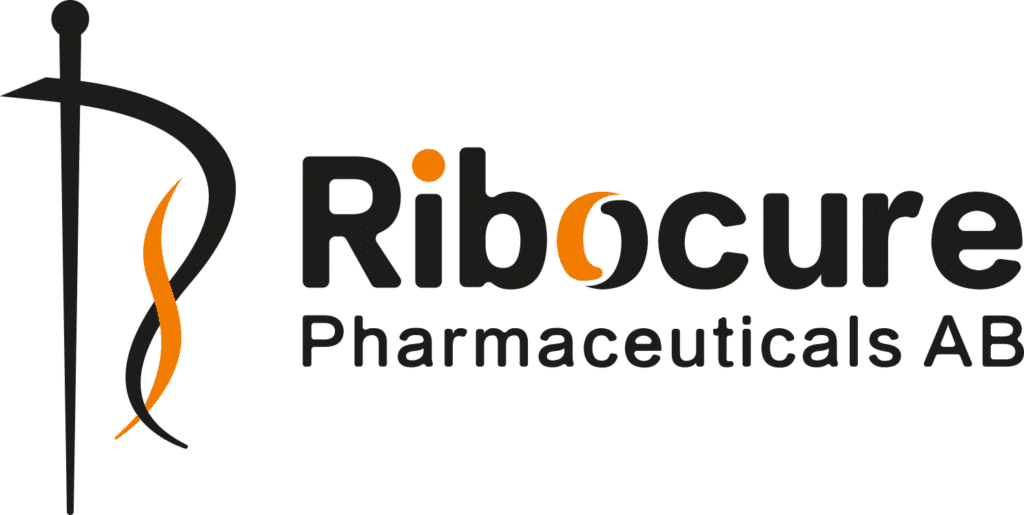预约演示
更新于:2025-05-07

Ribocure Pharmaceuticals AB
更新于:2025-05-07
概览
标签
内分泌与代谢疾病
消化系统疾病
心血管疾病
siRNA
疾病领域得分
一眼洞穿机构专注的疾病领域
暂无数据
技术平台
公司药物应用最多的技术
暂无数据
靶点
公司最常开发的靶点
暂无数据
| 排名前五的药物类型 | 数量 |
|---|---|
| siRNA | 3 |
| 排名前五的靶点 | 数量 |
|---|---|
| HBV-X(HBV-X蛋白) | 1 |
| F11(凝血因子XI) | 1 |
| APOC3(载脂蛋白C-Ⅲ) | 1 |
关联
3
项与 Ribocure Pharmaceuticals AB 相关的药物靶点 |
作用机制 F11抑制剂 |
在研机构 |
原研机构 |
非在研适应症- |
最高研发阶段临床2期 |
首次获批国家/地区- |
首次获批日期- |
靶点 |
作用机制 APOC3抑制剂 |
在研机构 |
原研机构 |
最高研发阶段临床2期 |
首次获批国家/地区- |
首次获批日期- |
靶点 |
作用机制 HBV-X抑制剂 |
原研机构 |
非在研适应症- |
最高研发阶段临床2期 |
首次获批国家/地区- |
首次获批日期- |
7
项与 Ribocure Pharmaceuticals AB 相关的临床试验NCT06797401
A Randomized, Double-Blind, Placebo-Controlled, Parallel-Group, Phase 2 Trial Evaluating the Efficacy and Safety of RBD5044 in Patients With Mixed Dyslipidemia
The goal of this clinical trial is to learn if drug RBD5044 works to treat mixed dyslipidemia in adults. It will also learn about the safety of drug RBD5044. The main questions it aims to answer are:
Does drug RBD5044 reduce the triglyceride levels? What medical problems may participants experience when taking drug RBD5044? Researchers will compare drug RBD5044 to a placebo to see if drug RBD5044 works to treat mixed dyslipidemia.
Participants will:
Receive RBD5044 or placebo twice during the trial (Day 1 and Day 84). Visit the clinic 11 times during 12 months (visit every 4-8 weeks) for checkups and tests.
Does drug RBD5044 reduce the triglyceride levels? What medical problems may participants experience when taking drug RBD5044? Researchers will compare drug RBD5044 to a placebo to see if drug RBD5044 works to treat mixed dyslipidemia.
Participants will:
Receive RBD5044 or placebo twice during the trial (Day 1 and Day 84). Visit the clinic 11 times during 12 months (visit every 4-8 weeks) for checkups and tests.
开始日期2025-01-28 |
申办/合作机构 |
CTIS2023-510369-92-00
A Randomized, Double-Blind, Placebo-Controlled, Parallel-Group, Phase 2 Trial Evaluating the Efficacy and Safety of RBD5044 in Patients with Mixed Dyslipidemia - RC02T001
开始日期2025-01-28 |
申办/合作机构 |
CTIS2023-510371-55-00
- RC01T001
开始日期2024-11-14 |
申办/合作机构 |
100 项与 Ribocure Pharmaceuticals AB 相关的临床结果
登录后查看更多信息
0 项与 Ribocure Pharmaceuticals AB 相关的专利(医药)
登录后查看更多信息
5
项与 Ribocure Pharmaceuticals AB 相关的文献(医药)2024-10-28·European Heart Journal
First-in-human study to evaluate the safety, pharmacokinetics (PK), and pharmacodynamics (PD) of RBD4059, a GalNAc-siRNA drug targeting coagulation factor XI (FXI), in healthy subjects
作者: Fu, J ; Zhan, H ; Egnell, L ; Gao, S ; Friend, R ; Ueckert, S ; Gabrielsen, A ; Chen, G ; Gan, L ; Wei, W ; Liang, Z ; Feng, Z ; Wikstrom, J
2023-12-01·ESC Heart Failure
Regional differences and coronary microvascular dysfunction in heart failure with preserved ejection fraction
Article
作者: Gan, Li‐Ming ; Erhardsson, Mikael ; Shah, Sanjiv J. ; Hage, Camilla ; Lagerström Fermer, Maria ; Lund, Lars H. ; Tromp, Jasper ; Venkateshvaran, Ashwin ; Ljung Faxén, Ulrika ; Svedlund, Sara ; Saraste, Antti ; SP Lam, Carolyn
2023-11-09·European Heart Journal
RBD5044 - a novel anti-ApoC3 GalNAc-siRNA drug resulted in sustained and profound reduction of triglycerides in mice and Rhesus monkeys
作者: Gao, S ; Tong, C ; Guo, Z ; Yu, H ; Gan, L ; Luo, H ; Liang, Z ; Zhang, H ; Wikstrom, J ; Zheng, S ; Cao, H
18
项与 Ribocure Pharmaceuticals AB 相关的新闻(医药)2025-01-10
苏州瑞博生物技术股份有限公司及其国际研发中心Ribocure Pharmaceuticals AB(合称“瑞博生物”)欣然宣布,已达成与德国勃林格殷格翰(Boehringer Ingelheim)合作协议约定的首个关键里程碑(勃林格殷格翰的公告原文请见文末)。
2024年1月3日,瑞博生物与勃林格殷格翰宣布达成了关于共同开发治疗代谢功能障碍相关脂肪性肝炎(MASH)的小核酸创新疗法的重磅合作协议(详情点击链接进行查看)。项目正式启动不到一年的时间双方合作就取得如此突破性进展,既显示了勃林格英格翰在MASH治疗领域的专业实力,也证明了瑞博生物小核酸技术平台的坚实以及团队卓越高效的国际合作能力。期待在双方的共同努力下,将持续达成后续多个里程碑,为MASH患者提供新的治疗方案。
关于勃林格殷格翰
勃林格殷格翰致力于研究突破性疗法,旨在变革生命,守护世世代代的健康。作为一家研发驱动的全球领先生物制药企业,公司在医疗需求高度未得到满足的领域通过创新展现价值。勃林格殷格翰自1885年成立以来一直是一家独立家族企业,始终着眼长远发展。在人用药品和动物保健业务领域拥有超过5.3万名员工,服务逾130个地区。详细信息请访问:www.boehringer-ingelheim.com。
关于瑞博生物及瑞博国际研发中心
瑞博生物是一家致力于开发RNA干扰(RNAi)药物的创新型研发企业,是中国小核酸技术和小核酸制药产业的主要开拓者和领军者。瑞博生物对标国际小核酸技术的创新前沿,致力于小核酸化学修饰和药物递送技术的迭代研发,建立了自主可控、全技术链整合的小核酸药物研发平台,支持小核酸药物从早期研发到产业化的各阶段研究。公司围绕心血管代谢疾病、肝病、肾病以及罕见病,建立了丰富的产品管线。公司坚持差异化靶点和产品布局,拥有国际化的创新研发团队,在全球开展产品研发和商业化,争取早日为患者带来全新的药物治疗手段。更多信息请参见www.ribolia.com。
瑞博国际研发中心位于瑞典哥德堡,是公司面向全球的临床开发和商务发展基地,拥有具备国际视野和全球临床开发实力的专业团队。中心建有临床试验基地和实验室,领导和推动小核酸创新药物在全球的临床试验和商务发展。更多信息请参见www.ribocure.com。
勃林格殷格翰的公告原文请访问:
https://www.boehringer-ingelheim.com/science-innovation/human-health-innovation/boehringer-new-partnership-and-pipeline-progress
突破性疗法
2024-10-09
据美柏必缔不完全的统计,2024年9月中国医药BD及并购交易共计14笔,其中跨境资产买入1笔,出海交易6笔,境内交易7笔。
一一一
跨境资产买入篇
1. 瑞博生物与PHEIRON就AI辅助的RNA药物开发达成战略合作
2024年9月2日,苏州瑞博生物技术股份有限公司(瑞博生物)及其子公司Ribocure Pharmaceuticals AB(Ribocure)宣布与PHEIRON达成战略合作伙伴关系,将借助PHEIRON先进的AI平台PheironGPS加速瑞博生物RNA药物的研发。此次合作旨在通过整合PHEIRON先进人工智能技术产生的大规模人类多组学遗传数据,来增强瑞博生物在心血管代谢疾病领域的开发能力。
二
跨境资产卖出篇
1. 岸迈生物与Vignette Bio宣布就开发BCMA × CD3双特异性抗体EMB-06达成战略合作
2024年9月5日,岸迈生物与Vignette Bio(由Foresite Labs孵化并由Foresite Capital,启明创投美国,Samsara Biocapital,以及Mirae Capital Life Science共同投资的临床阶段公司)宣布双方就岸迈生物靶向BCMA/CD3的T细胞接合(TCE)分子EMB-06,达成了一项授权许可协议。根据该协议规定,岸迈生物将授予Vignette在大中华区(包括中国大陆,香港,澳门和台湾地区)以外开发和商业化EMB-06的独家权利,而岸迈生物将保留EMB-06在大中华区的权利。岸迈生物将以现金和Vignette股权的形式收取总计6000万美元的首付款对价,并将有权收取最多5.75亿美元的开发、上市、和商业化的里程碑付款,以及基于净销售额的收入分成。
2. 宝济药业晟济药业与欧加隆就辅助生殖领域创新在研药物达成协议
2024年9月12日, 宝济药业及其全资子公司晟济药业,宣布欧加隆中国就辅助生殖领域创新在研药物SJ02达成供应和转让协议。根据协议条款,欧加隆中国将获得SJ02在中国大陆的独家商业化权益。宝济药业及晟济药业将获1,200万美元的首付款,并将根据商业化进程等获得额外款项。
3. 诺纳生物与Alkyon Therapeutics签订合作协议
2024年9月24日,诺纳生物宣布与位于美国Alkyon Therapeutics签订合作协议,利用诺纳生物全人源抗体技术平台Harbour Mice®,共同推进下一代肿瘤免疫及其他靶向疗法开发。
4. 信念医药与拜耳子公司AskBio达成战略合作共同探索创新基因疗法潜力
2024年9月25日,信念医药宣布与拜耳集团的全资独立运营的基因疗法子公司AskBio达成战略合作,共同探索创新基因疗法潜力。根据合同条款,双方将结合各自在基因治疗技术方面的专业积淀和优势力量,深入研究和探索通过肝脏靶向治疗途径实现创新基因治疗方案的疾病领域。
5. 天境生物与赛诺菲就全球创新CD73靶向肿瘤疗法在大中华区达成合作
2024年9月25日,天境生物宣布已与赛诺菲就天境生物自主研发的全球创新CD73抗体尤莱利单抗(uliledlimab)在大中华区的开发、生产和商业化达成战略合作。合作协议包括首付款及近期里程碑付款共计约3200 万欧元(约合 2.5 亿人民币),以及后续里程碑付款,潜在总额最高不超过约2.13 亿欧元(约合 17 亿人民币),天境生物还将获得基于销售额的分级特许权使用费,以及新适应症的额外里程碑付款。
6. 锐格医药美国与基因泰克就下一代CDK抑制剂达成收购协议
2024年9月30日,锐格宣布已与基因泰克达成最终购买协议,基因泰克将从锐格收购用于治疗乳腺癌的下一代 CDK 抑制剂产品组合。根据协议条款,锐格将获得8.5亿美金首付款,并有资格根据未来一些预定里程碑的实现情况获得额外现金支付。基因泰克将负责全球临床开发、生产和商业化。锐格将继续管理正在进行的两项临床Ⅰ期试验直至结束。
三
中国境内交易篇
1. 两千万美元预付款:先声再明引进塔吉瑞第三代ALK抑制剂
2024年9月2日,先声药业集团旗下先声再明宣布,已于近日与深圳市塔吉瑞生物医药就临床阶段抗肿瘤候选药物ALK/ROS1双重受体酪氨酸激酶抑制剂TGRX-326订立合作协议。根据协议条款,先声再明将获得TGRX-326在中国大陆的独家商业化权益(包括但不限于对TGRX-326进行推广、相关策略的制订、调整及获得与此相关利益的权利等)。塔吉瑞将获得逾2000万美元首付款,并将向先声再明支付推广服务费。
2. 宜明昂科对价14万元转让子公司7%股权给嘉兴昶新
2024年9月13日,为表彰田文志博士及郑茜博士对目标公司成立及营运作出的贡献及努力,宜明昂科与嘉兴昶新订立股权转让协议,嘉兴昶新同意收购及公司同意转让宜明凯尔7%的股权),对价为人民币14万元。收购完成后,宜明凯尔将成为宜明昂科的非全资附属公司,将由宜明昂科及嘉兴昶新分別拥有93%及7%的股权。
3. 贝达药业拿下禾元生物植物源重组人血清白蛋白注射液经销权
2024年9月19日,贝达药业与武汉禾元生物禾元生物药品区域经销协议。双方约定了关于植物源重组人血清白蛋白注射液(商品名:奥福民,OsrHSA,HY1001,以下简称“植物源重组人血清白蛋白注射液”)的商业化合作事项,具体交易总价以该协议项下的订单实际发生金额计算。
4. 华东医药与惠升生物宣布就1类新药惠优静在中国大陆的商业化权益达成独家战略合作
2024年9月20日,华东医药宣布与四环医药旗下非全资附属公司惠升生物,就其已上市创新产品惠优静(脯氨酸加格列净片)在中国大陆的商业化权益达成独家战略合作。惠优静是惠升生物在中国获批上市的治疗2型糖尿病的SGLT-2抑制剂。
5. 藤济医药携手特宝生物达成1.45亿项目合作,共推创新药物开发
2024年9月20日,藤济医药与厦门特宝生物达成项目合作,该项目累计交易额最高人民币1.45亿元(含首付款及里程碑付款),及特许权使用费。双方针对公司原创新药“NM6606项目”在中国(包括中国大陆及港澳台)地区内,就治疗肝脂肪代谢及肝纤维化相关疾病领域进行研发、注册及商业化达成合作。藤济医药保留“NM6606项目”在许可范围以外的所有权益。
6. 超15亿元!吉盛澳玛与君实生物达成授权合作
2024年9月26日,江北新区南京生物医药谷园区企业吉盛澳玛宣布,与君实生物控股子公司君拓生物就小核酸鼻用喷雾药物签署许可及合作协议。吉盛澳玛授予君拓生物在大中华区基于许可知识产权研发、改进、制造、生产、使用、申报、注册、商业化和以其他任何方式利用许可产品的独占许可权利,并与君拓生物在大中华区外合作开发IAMA-001鼻喷剂型项目。君拓生物将向吉盛澳玛支付4000万元人民币首付款。根据许可产品研发进展向吉盛澳玛支付不超过2.4亿元人民币的大中华区研发里程碑,并在许可产品首个适应症获得美国及欧盟药品监管部门上市批准后向吉盛澳玛支付不超过1.5亿美元的大中华区外研发里程碑。同时,根据许可产品在大中华区的销售情况向吉盛澳玛支付不超过2.5亿元人民币的销售里程碑,以及许可产品在大中华区年度净销售额个位数百分比的销售提成。双方同意按照50%:50%的权益比例享有许可产品在大中华区外的所有权益以及收益分成。IAMA-001小核酸免疫调节剂鼻用喷雾剂型药物是吉盛澳玛自主研发的一款创新型免疫调节小核酸鼻用喷雾剂,主要用于治疗季节性过敏性鼻炎,是全球首个自主研发并进入临床试验阶段的鼻喷免疫调节小核酸药物。
7. 康宁杰瑞与石药集团就HER2双表位ADC达成合作
2024年9月29日,康宁杰瑞宣布已与石药集团全资附属公司津曼特生物科技订立许可协议,以在中国内地(不包括香港、澳门或台湾)开发、销售、许诺销售及商业化JSKN003(一种靶向HER2双表位ADC),用于治疗肿瘤相关适应症。根据许可协议,康宁杰瑞有权收取最高合共人民币30.8亿元的预付款及里程碑付款,其中包括收取人民币4亿元的预付款,与多项注册临床试验的首例患者入组相关的开发里程碑付款人民币3亿元,根据监管审批进展收取的监管里程碑付款和销售里程碑付款。此外,康宁杰瑞亦有权收取JSKN003的产品销售淨额两位数百分比的特许权使用费。
四
小结
2024年9月,中国生物医药领域共完成14笔交易(跨境引进1笔,跨境出海6笔,中国境内交易7笔)。本月中国医药BD交易呈现以下特点:
1. 跨进买入交易连续多月交易低迷且未出现大交易金额,随着9月底的中国资本市场进入牛市,未来中国头部药企可能会从观望态度转变为实际出手;
2. 出海交易锐格医药&基因泰克实现惊人的8.5亿美元首付款拔得头筹,宝济药业&欧加隆、天境生物&赛诺菲 均为中后期产品中国区域合作,看好中国市场;
3. 境内交易持续强强联合,中国的优秀产品,尤其是中后期产品与商业化能力强的中国上市公司合作共赢。
本文转载自美柏必缔/MybioBD
免责声明
本文系转载,仅做分享之用,不代表平台观点。图片、文章、字体等版权均属于原作者所有,如有侵权请告知,我们会及时处理。
------------------------------
「长按」二维码添加小达「进群」
与更多行业伙伴共探市场前沿资讯
艾美达医药咨询
艾美达(北京)医药信息咨询有限公司,成立于2014年4月,是一家专业的医药行业咨询服务提供商。公司致力于将产业政策研究与真实世界的数据挖掘深度结合,洞悉行业政策对市场的影响,通过专业的研究提供前瞻性的市场分析,为企业产品上市后的市场准入提供整体解决方案。
引进/卖出并购基因疗法
2024-06-10
Oncology is “not the largest” therapeutic area for Boehringer Ingelheim, but it's one where the company is “committed” to making a difference, global head of therapeutic areas Ioannis Sapountzis, Ph.D., said in an interview. (Boehringer Ingelheim)
With 25 launches planned through 2030, Boehringer Ingelheim is gearing up for a busy few years. As a part of that, the German drugmaker is looking forward to flexing its oncology muscles with two new cancer drug launches in 2025.
While the company’s overall pipeline is filled with early-stage assets acquired through recent business development deals, its oncology R&D efforts are largely centered around the late-stage prospects brigimadlin and zongertinib.
Brigimadlin, a member of the MDM2-p53 antagonist drug class, recently entered a pivotal trial testing the candidate in patients with the rare cancer dedifferentiated liposarcoma (DDLPS).
DDLPS is an ultra-rare aggressive cancer with “very, very dismal prognosis and a high unmet medical need,” Boehringer’s global head of therapeutic areas, Ioannis Sapountzis, Ph.D., said in an interview at this year’s annual American Society of Clinical Oncology (ASCO) conference in Chicago. The exec pegged the DDLPS patient population at around 3,000 worldwide.
The disease space hasn’t seen “any innovation” in 40 years, Sapountzis said. Currently, DDLPS is treated primarily with chemotherapies including doxorubicin, which is nicknamed “red devil chemo” because of its harsh side effects.
Brigimadlin is the product of 10 years of research and works by blocking the MDM2 oncoprotein from interacting with the cancer-surpressing p53 gene, helping patients fend off cancer cell growth, according to the company.
Outside of DDLPS, the company aims to expand the drug's use to other sarcoma subtypes.
At the ASCO conference, BI presented results from an early study testing the drug in combination with radiotherapy in newly diagnosed glioblastoma patients. The data support “continued investigation” of brigimadlin in the disease, investigators noted.
As for zongertinib, the drug is a tyrosine kinase inhibitor being evaluated as a potential treatment for HER2-mutated non-small cell lung cancer (NSCLC).
The company is looking to bring that therapy to market in the first half of 2025. Armed with an existing infrastructure for its marketed EGFR-mutated NSCLC med Giotrif, Boehringer is already busy building out its commercial resources, Sapountiz said.
Besides Giotrif, BI's other commercial cancer drug is Vargatef for certain lung cancer patients.
Oncology is “not the largest” therapeutic area in the Boehringer’s portfolio, Sapountzis acknowledged, but it’s one where the company has “been committed to really making a difference."
Dealmaking focus
BI has long been active in the M&A space and is “always looking for innovation,” Sapountzis noted.
Just last month, the drugmaker shelled out 38.8 million euros ($42 million) to longtime partner OSE Immunotherapeutics in exchange for a preclinical anti-PD1/cytokine med and an expansion of a prior oncology research effort.
So far this year, Boehringer has also signed a T-cell anti-cancer therapy partnership with 3T Biosciences and a collab with Suzhou Ribo Life Science and Ribocure Pharmaceuticals to use RNA to treat metabolic-associated steatohepatitis.
“We want to be truly collaborative in everything we do,” Sapountzis said. “We feel that together, we can achieve more; together, we can really advance treatments much better.”

ASCO会议
100 项与 Ribocure Pharmaceuticals AB 相关的药物交易
登录后查看更多信息
100 项与 Ribocure Pharmaceuticals AB 相关的转化医学
登录后查看更多信息
组织架构
使用我们的机构树数据加速您的研究。
登录
或

管线布局
2025年12月14日管线快照
管线布局中药物为当前组织机构及其子机构作为药物机构进行统计,早期临床1期并入临床1期,临床1/2期并入临床2期,临床2/3期并入临床3期
临床2期
3
登录后查看更多信息
药物交易
使用我们的药物交易数据加速您的研究。
登录
或

转化医学
使用我们的转化医学数据加速您的研究。
登录
或

营收
使用 Synapse 探索超过 36 万个组织的财务状况。
登录
或

科研基金(NIH)
访问超过 200 万项资助和基金信息,以提升您的研究之旅。
登录
或

投资
深入了解从初创企业到成熟企业的最新公司投资动态。
登录
或

融资
发掘融资趋势以验证和推进您的投资机会。
登录
或

生物医药百科问答
全新生物医药AI Agent 覆盖科研全链路,让突破性发现快人一步
立即开始免费试用!
智慧芽新药情报库是智慧芽专为生命科学人士构建的基于AI的创新药情报平台,助您全方位提升您的研发与决策效率。
立即开始数据试用!
智慧芽新药库数据也通过智慧芽数据服务平台,以API或者数据包形式对外开放,助您更加充分利用智慧芽新药情报信息。
生物序列数据库
生物药研发创新
免费使用
化学结构数据库
小分子化药研发创新
免费使用
